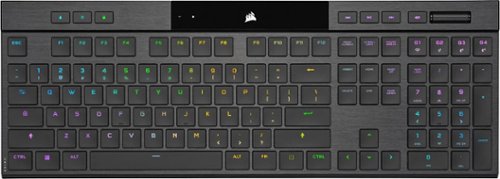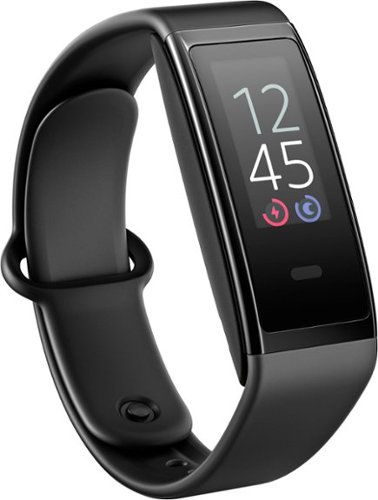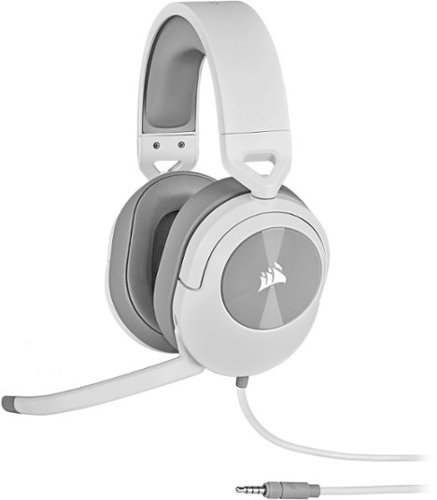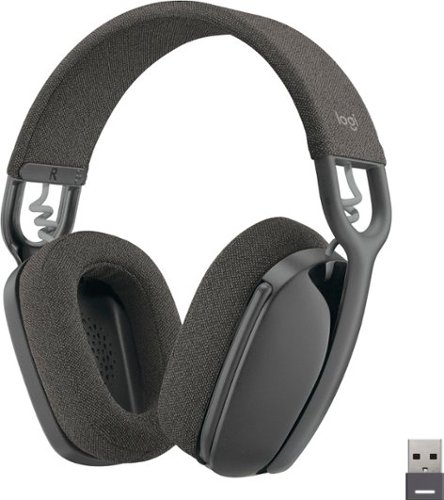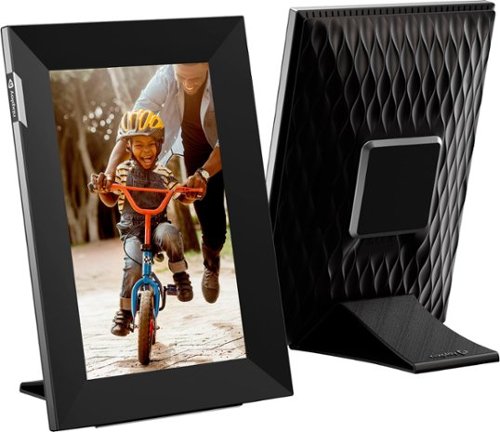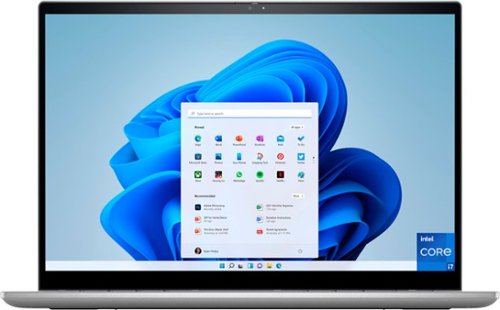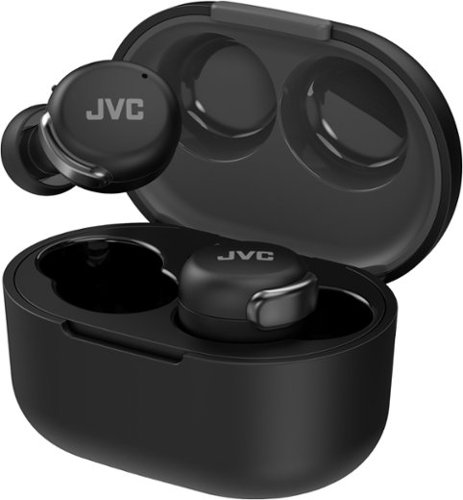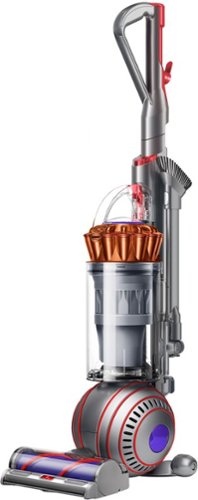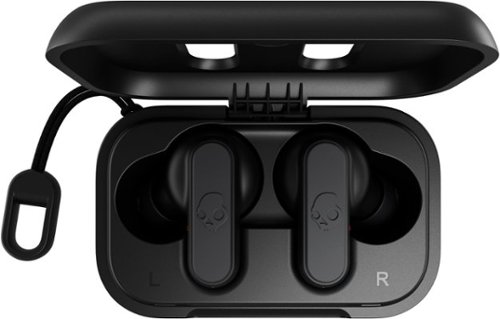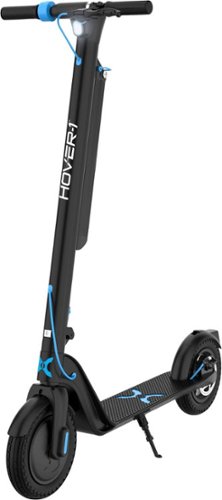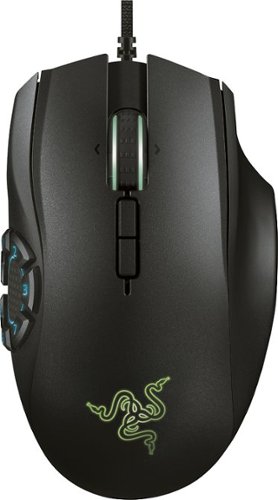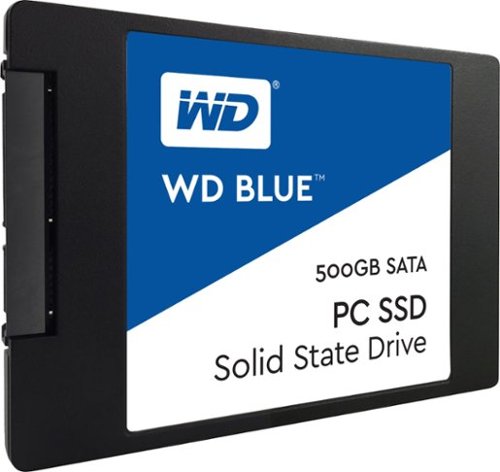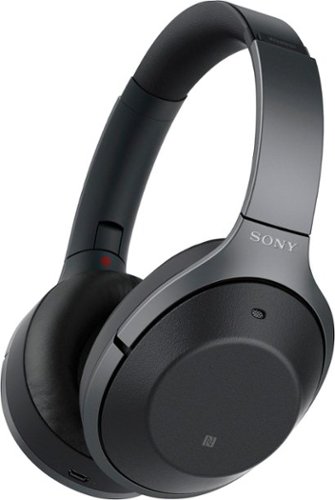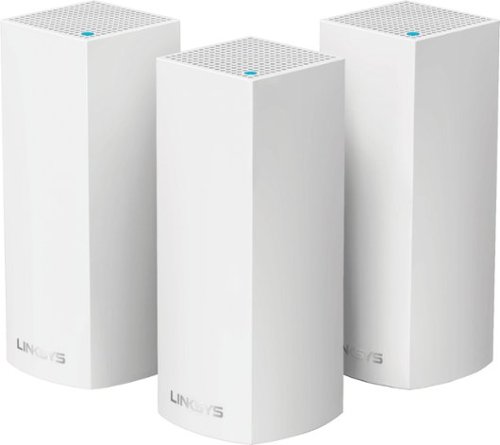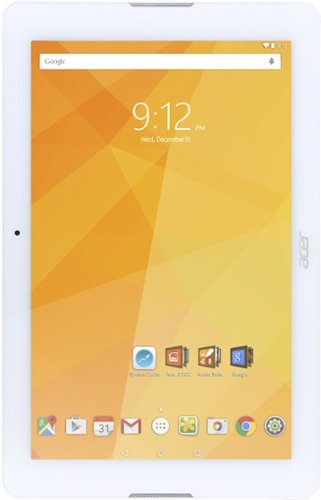Jaron's stats
- Review count149
- Helpfulness votes293
- First reviewSeptember 30, 2010
- Last reviewApril 30, 2024
- Featured reviews0
- Average rating3.6
- Review comment count2
- Helpfulness votes1
- First review commentOctober 13, 2015
- Last review commentNovember 1, 2016
- Featured review comments0
Questions
- Question count0
- Helpfulness votes0
- First questionNone
- Last questionNone
- Featured questions0
- Answer count11
- Helpfulness votes2
- First answerDecember 16, 2010
- Last answerSeptember 7, 2018
- Featured answers0
- Best answers0
Meet the CORSAIR K100 AIR Wireless RGB Mechanical Gaming Keyboard, an ultra-thin keyboard that places outstanding performance and productivity in a sleek brushed aluminum frame. Its unbelievably thin profile – just 11mm at its slimmest point – makes the K100 AIR the stylish centerpiece of your entire desktop and workspace. Hyper-fast, tactile CHERRY MX Ultra Low Profile mechanical keyswitches deliver a responsive, satisfying mechanical keyboard experience – you will want to use the keyboard for everything.The K100 AIR offers three ways to connect to your PC, Mac, and devices for optimal, hyper-fast wireless versatility: sub-1ms SLIPSTREAM WIRELESS, Bluetooth, or USB wired. Connect to multiple devices wirelessly and switch between them with the press of a button, with secure AES 128-bit encryption. Wired mode enables CORSAIR AXON Hyper-Processing Technology to transmit keystrokes up to 8x faster than standard gaming keyboards, helping you stay one step ahead of opponents during competition. The K100 AIR offers endlessly customizable lighting and workflows for total control over your setup. Four dedicated G keys are fully programmable to perform custom actions, shortcuts, and macros to elevate your productivity. The K100 AIR shines with brilliant per-key RGB backlighting, for nearly limitless customization for up to 20 lighting layers simultaneously, powered by AXON. Unlock full control over lighting, key remapping, and more with powerful CORSAIR iCUE software. With up to 200 hours of wireless battery life and all the premium features in CORSAIR’s thinnest gaming keyboard ever, the K100 AIR enables you to play elevated.
Customer Rating

4
Pricey, but good keyboard to share between devices
on October 4, 2022
Posted by: Jaron
THE GOOD
- Wired USB, wireless USB, and Bluetooth connectivity
- Per-key RGB backlighting
- Onboard profile storage great for transferring keyboard to multiple devices
- Key switch has crisp feel for low-profile keys
- Has storage slot for wireless USB dongle
- Works with Xbox, PlayStation, and Switch
- Wired USB, wireless USB, and Bluetooth connectivity
- Per-key RGB backlighting
- Onboard profile storage great for transferring keyboard to multiple devices
- Key switch has crisp feel for low-profile keys
- Has storage slot for wireless USB dongle
- Works with Xbox, PlayStation, and Switch
THE BAD
- Fairly pricey
- Caps and Num lock keys don't have on-key indicators
- Shift symbols on keys are shown below the primary character and aren't well backlit
- Programming software is massive 1GB download
- No auto power-off in wired mode
- Names of RGB lighting pattern in software can be confusing
- "Software" and "Hardware" profiles are not interchangeable
- Fairly pricey
- Caps and Num lock keys don't have on-key indicators
- Shift symbols on keys are shown below the primary character and aren't well backlit
- Programming software is massive 1GB download
- No auto power-off in wired mode
- Names of RGB lighting pattern in software can be confusing
- "Software" and "Hardware" profiles are not interchangeable
THE TLDR
The K100 Air is a well made keyboard with low-profile switches that still feel relatively crisp. It's rather pricey for just a desktop keyboard, but the onboard profile storage means you can customize the keymaps and lighting for multiple devices without them needing to run Corsair's software. If you need a semi-portable keyboard that can work with your desktop, your laptop, your phone, your tablet, and your gaming consoles, this is a great way to go.
The K100 Air is a well made keyboard with low-profile switches that still feel relatively crisp. It's rather pricey for just a desktop keyboard, but the onboard profile storage means you can customize the keymaps and lighting for multiple devices without them needing to run Corsair's software. If you need a semi-portable keyboard that can work with your desktop, your laptop, your phone, your tablet, and your gaming consoles, this is a great way to go.
THE DETAILS
As a keyboard goes, the K100 feels very solid and well built. The switches feel crisp with a pleasant resistance. The frame is quite rigid, which adds to the nice feel of the key switches. It's a great improvement over typical membrane "chiclet" keyboards. Dedicated typists will likely cringe at the thought of using something other than their precious Blue or Brown switches. People used to normal full-height keyboards will likely have a period of adjustment going to a half-height board.
As a keyboard goes, the K100 feels very solid and well built. The switches feel crisp with a pleasant resistance. The frame is quite rigid, which adds to the nice feel of the key switches. It's a great improvement over typical membrane "chiclet" keyboards. Dedicated typists will likely cringe at the thought of using something other than their precious Blue or Brown switches. People used to normal full-height keyboards will likely have a period of adjustment going to a half-height board.
The keyboard can connect over USB, both wired and using wireless dongle, and Bluetooth. The keys are backlit with programmable RGB per-key lighting effects and can also be customized for keystrokes, macro, and application shortcuts. To customize the keyboard, you need to use Corsair's iCue software, which seems rather bloated as the installation file alone is over a 1GB download. Apart from just configuring Corsair peripherals, it also has a number of system monitoring utilities, like temperature and CPU utilization.
Using iCue isn't horrible, but it could be more straightforward. You can create any number of profiles for the keyboard, and each profile can have its own custom lighting scheme, macros, keystroke remapping, etc. You can save commonly used commands, light schemes, and macros to a library to make them easier to reassign and share among multiple profiles. You can make simple are very elaborate RGB schemes with multiple layers and effects. If you have multiple Corsair products, you can also sync them together. It will take some experimentation to see what all the different effects do, especially since some of them are names very similarly ( what's the difference between "Solid Color" and "Static Color" effects? ).
Also, the K100 has internal storage that allows it to store up to 50 profiles on board, meaning you can use your customizations even on devices that don't have iCue, like a separate computer, a tablet, a phone, even a gaming console. A dedicated profile key on the top left of the keyboard cycles through all profiles. Unfortunately iCue separates "software" profiles that run through iCue itself and "hardware" profiles that are copied to the keyboard, and you can't convert one profile type to the other. So if you make a software profile that you really like and want to copy it to the keyboard's internal memory so you always have access to it, you have to make that profile again from scratch as a hardware profile. It's extremely frustrating.
Thankfully, that's the only major flaw. You may find a few other niggles annoying. The secondary key symbols ( such as the & on the 7 key ) aren't backlit very well and are quite faint. They're also shown BELOW the main character. For touch-typists, this doesn't matter, but for anyone that still hunts-and-pecks for things, it can be confusing when the shift character is shown below the normal one. The caps lock and Num lock keys also don't have lighting indicators on the keys themselves. Instead there's a small status window on the top center of the keyboard that shows a 1 and A when they're on. You can probably get creative in the RGB customization to change the key backlighting when you turn one of them on, but that's something that should be directly available. Also, while the keyboard has an auto-off feature when using it in a wireless mode, it will not power-down in wired USB mode. If you use this on a desktop, it's a little annoying when you power down the system but the keyboard stays glowing at night.
Apart from all this, the biggest concern is the price. As of this writing it's going for around $280, which is rather steep. Normal wired mechanical keyboards with RGB lighting can be had for almost half that price. But almost all of those are going to be wired only models. Now, if all you want is a good mech keyboard for a desktop, those cheaper wired models are the better way to go. Mechanical keyboards that have wired, wireless, and Bluetooth connectivity are going to cost north of $200. Considering the K100 can pair with multiple Bluetooth devices, and has internal memory to store custom profiles for each of those devices, and the $280 doesn't look quite as bad. It may be a niche use case, but the K100 makes a lot of sense as a semi-portable keyboard. The half-height keys and low-profile frame make it much smaller to pack around. If you need a keyboard that can work with your desktop and laptop, perhaps a tablet on occasion, and maybe even a gaming console or HTPC, the K100 has some very desirable features, albeit at a premium price.
I would recommend this to a friend!
More than just counting steps — Access key Halo health metrics like heart rate, Activity points, Sleep score, and on-demand blood oxygen levels on the Halo View color touch display.
Customer Rating

2
Good health content, bad mobile app and interface
on October 2, 2022
Posted by: Jaron
THE GOOD
- Affordable initial price
- Lightweight
- On-wrist notifications for calls and text messages
- Lots of fitness and health programs available in application
- Affordable initial price
- Lightweight
- On-wrist notifications for calls and text messages
- Lots of fitness and health programs available in application
THE BAD
- Requires monthly subscription for full use
- Long initial setup
- No notifications for email, calendar, or anything else
- No GPS, either on-board or tethering through phone
- Tricky strap fastener
- Can't customize band interface or icons
- Sluggish mobile application interface
- Using app and band is big drain on phone battery
- Can't view data or fitness programs from web browser or second device
- Requires monthly subscription for full use
- Long initial setup
- No notifications for email, calendar, or anything else
- No GPS, either on-board or tethering through phone
- Tricky strap fastener
- Can't customize band interface or icons
- Sluggish mobile application interface
- Using app and band is big drain on phone battery
- Can't view data or fitness programs from web browser or second device
THE TLDR
The Halo View is inexpensive because Amazon plans to make it up on the backend with the required subscription. While there are lots of good training programs and meal recipes available, they're jumbled together in a mobile app that's slow, clunky, and poorly organized. It only has phone call and text notifications for your phone with no other smart watch integration functions. Without a subscription, it's a very basic fitness band with few features.
The Halo View is inexpensive because Amazon plans to make it up on the backend with the required subscription. While there are lots of good training programs and meal recipes available, they're jumbled together in a mobile app that's slow, clunky, and poorly organized. It only has phone call and text notifications for your phone with no other smart watch integration functions. Without a subscription, it's a very basic fitness band with few features.
THE DETAILS
You'd think a company with Amazon's resources and market research would be able to manufacture a near perfect fitness band. But this new Halo View makes them 0 for 2.
You'd think a company with Amazon's resources and market research would be able to manufacture a near perfect fitness band. But this new Halo View makes them 0 for 2.
There's not a lot of good to say about the Halo View, or rather, not a lot of good things that don't also apply to most competing fitness bands available. It's reasonably lightweight and doesn't put a lot of pressure on your wrist. The screen is a nice sharp OLED display that's easily readable in indoors and out. It does a reasonable job tracking heartrate and activity levels. It will vibrate and notify you of incoming calls and text messages on your phone. The Halo doesn't have an onboard GPS, nor can it tether to the GPS in your phone, so runners who want distance tracking should steer clear.
The really nice feature here is the amount of health related content available on Amazon's platform. You have access to a LOT of fitness programs, videos with professional trainers guiding you through workouts, food and diet plans with recipes, and a lot more. These are really helpful for someone just starting a health regimen, who doesn't already have a lot of know-how in safe exercise habits and what not. So on this, Amazon gets big props. However getting to this content and filtering through it can be an exercise in frustration.
Initial setup was a hassle ( I use Android, so I can't say if iOS is as bad ). Starting the Halo application on your phone or tablet, you have to first log in with an Amazon account then create a profile ( name, age, weight, height, etc ). Then it goes to Bluetooth pairing with the Halo itself and checks for firmware updates. For me, it downloaded an update then rebooted the Halo. This required me to go through the whole setup process again. After initial setup. I enabled phone and text notifications on the Halo. This required allowing Android privileges to the Halo, but the change also required the Halo to be re-paired with my phone. That re-pairing forced me to go through initial profile setup yet AGAIN.
The notifications themselves are barely useful. You can accept or reject a call on the Halo, but you can't respond to text messages from it. Text notifications also display a lot of the message header, which doesn't leave a lot of room for it to display the message contents. Notifications for group messages only shows that you received one, but nothing else. You also have to clear notices on the Halo independent of your phone, so if you've marked a text as read on your phone, it won't clear it from the Halo, and vice versa. Also, the Halo only supports notices for calls and text. You can't get notifications for email, phone OS alerts, or any other apps on your phone.
For fitness and exercise tracking, the Halo uses an arbitrary point system rather than normal metrics like steps taken or minutes active. An activity or workout is worth different points depending on how high your heartrate stays for a given period of time. It might be simple for some people to think "I'm aiming for X points per day," but I prefer tracking how many active minutes I have in a given day or week. Also, the Halo will subtract points from your tally if it thinks you have too much sedentary time in your daily routine. Do you have a desk job? You'll lose points. Taking a nap or catching up on some healthy sleep on a weekend morning? That's too much down time.
Speaking of sleep, the tracking is fairly poor. Unfortunately like so many other fitness trackers, there is no option to manually put the Halo in sleep mode; it's all automatic. The Halo must track gentle resting as light sleep because it thinks I always fall asleep in under five minutes. To make matters worse, it's very easy to accidentally turn the Halo's display on. You can set a custom night time schedule where it won't turn on just from raising your wrist, but if any part of your body touches the screen while you're moving in your sleep and it will turn on.
To go along with this, the Halo itself has very few customization options. The watchface has 9 digital clocks that are the same style, just different colors, and 2 analog faces. There is no option for 24-hour time and the week always starts on Monday. The Halo interface and menus can't be customized. You can't rearrange icons or hide options. You can't pin often used utilities like the stopwatch to a home screen. You can't rearrange the different exercise profiles to put your most used modes at the top of the list. There is no auto-brightness option for it to change the display brightness between indoors and outdoors. The default strap fastener can be tricky to close. It's easiest to fasten if you do it on the outside of your wrist. I prefer leaving the display on the inside of my wrist as it protects it better from accidental damage, but the Halo doesn't support any kind of landscape display mode for wearing it like this.
After setting up the band itself, finding relevant information in the application is clumsy. The "Feed" tab is essentially a marketing list for Amazon using a "recommended for you" algorithm based on your past use. After a few weeks of use it gets a little better by showing quick links to your active exercise programs, but I find it still mostly useless. Vital stats and basic metrics are under the "Data" tab, but things are split into a lot of different categories. By default, data is grouped by week; trying to view stats for a given day requires drilling down and going through more sub-menus. Having separate sub-categories for "Activity," "Movement," and "Body" also makes it confusing to know what data is found where ( are my workouts tracked in Activity or Movement? ).
As said before, the Halo has a wealth of exercise programs and diet recipes, but finding ones you want isn't always easy. You can look for an individual workout and program that includes mixed workout videos with a schedule. You can use filters to only show things from certain categories, but there is no search feature. The filter categories have a lot of overlap ( like Conditioning and Endurance, Build Muscle and Build Strength, or Stability and Posture ). The filters can reduce the list you look through, but without a search feature you have to browse through many lists to find what you want. Simply looking for a daily stretching program took me over 15 minutes. There is a bookmark feature, so you can sort through your favorites easier, but finding them to mark in the first place is the hard part.
With the mobile app being slow and clunky, it would be easier and faster to view your data and program progress from a web browser on a regular computer, but there is no way to do so. Despite already having a massive website, Amazon doesn't have any sort of web portal access to the Halo system. Everything you do with the Halo must be done through a mobile application. Not only that, but it can only be done through one mobile device. I wanted to install the Halo app on my tablet in addition to my phone so I could have a larger screen to follow my exercise program videos. When I launched the app on my tablet, it wanted me to go through the entire profile setup process again and pair a Halo band. I couldn't simply sign-in and have the app download my health data. And despite how many people have a FireTV device, there is no Halo Fitness app available there either.
Considering the Halo's main benefit is in the training programs and video content, its overall value is tied to the ongoing cost of maintaining that monthly subscription. The Halo comes with a one year membership, but if you plan to use it longer, that's an extra $50ish per year. For a sub-$100 fitness band, that's a significant cost increase. Also, that first year membership is not transferable. If you give your Halo to someone else before the first year is over ( if you decide it isn't right for you ) the remaining membership will not transfer to the new owner. Without the subscription, you don't just lose access to the videos, you also lose access to most of the Halo functions: it will track heartrate, sleep time ( but not sleep stages ), and basic activity levels, but that's it.
No, I would not recommend this to a friend.
The CORSAIR HS55 STEREO Gaming Headset delivers all-day comfort and quality with memory foam leatherette ear pads and custom-tuned 50mm neodymium audio drivers, without weighing you down thanks to lightweight construction. An omni-directional microphone picks up your voice loud and clear, with a convenient flip-to-mute function for even easier control. A 3.5mm audio connector and an included Y-cable adapter ensures wide compatibility with most devices, including PC, Mac, PS5 with Tempest 3D AudioTech support, PS4, Nintendo Switch, mobile devices, and more. Complete with on-ear volume control for convenient audio adjustments, you can press play on great audio with the HS55 STEREO.
Customer Rating

4
A great "basic" headset
on August 8, 2022
Posted by: Jaron
GOOD
- Sturdy construction
- Good audio
- Includes splitter cable
- Sturdy construction
- Good audio
- Includes splitter cable
BAD
- Standard audio is a little bass heavy
- Non-detachable cable
- No mic gain control
- Standard audio is a little bass heavy
- Non-detachable cable
- No mic gain control
TLDR
The HS55 is a great option for someone looking for a well-built, good-sounding, basic feature headset. The 3.5mm wired connection works with PC, PlayStation, Xbox, Switch, and practically every gaming platform. It doesn't have wireless connectivity, but that also means it has no batteries to worry about.
The HS55 is a great option for someone looking for a well-built, good-sounding, basic feature headset. The 3.5mm wired connection works with PC, PlayStation, Xbox, Switch, and practically every gaming platform. It doesn't have wireless connectivity, but that also means it has no batteries to worry about.
There's not a lot of further details to dive into for the HS55 Stereo because it's a very basic headset. The 4-pole 3.5mm connection keeps things simple and compatible with a wide variety of gaming devices. While gaming consoles and laptops recognize the 4-pole for audio and mic, the box also contains a short splitter cable for PCs that have separate audio and mic inputs. NOTE: This headset does NOT come with the USB adapter shown in the product images. That's for the 7.1 Surround model of the HS55.
A volume dial on the left earcup is the only control and the mic will mute when you flip it up, keeping it, again, simple. Corsair opted for larger 50mm drivers instead of the usual 40mm ones, giving the HS55 better audio quality than most low-cost headsets. The default EQ does favor bass a little, which is fine for most uses, but won't impress musical purists. I find it comfortable to wear ( that's subjective, of course ), though it can get a little hot after a few hours.
Really, I only have two small complaints. One, there is no volume or gain control for the mic. Not a huge problem, as the mix boom is flexible and you can set it closer and farther from your mouth. Two, I would've preferred a detachable cable on the headset so you could swap any male-to-male 3.5mm cable you wanted. The 6-ft cable gets a little long when you just want to connect it to a PlayStation or Xbox controller.
I would recommend this to a friend!
Logitech - Zone Vibe 125 Wireless Over-the-Ear Headphones with Noise-Canceling Microphone - Graphite
Experience immersive audio with Logitech Zone Vibe 125 headphones. Professional enough for the office, casual enough for home, it’s designed for the way you work and play—without compromise. Lightweight headphones feature large speaker drivers for powerful sound and fabric mesh cushions for a comfortable fit. The flip-to-mute mic provides immediate privacy anytime, while its noise-canceling feature ensures you’re heard clearly. Get up to 30m wireless range plus a USB receiver for smoother connection. Collaborate with coworkers in video meetings —then slide into your evening for personal entertainment. Long battery life ensures Zone Vibe 125 goes as long as you do.
Customer Rating

3
Laggy & far too expensive for the average features
on August 8, 2022
Posted by: Jaron
GOOD
- Includes USB-A to C adapter
- Lightweight
- Good battery life
- PS4 compatible
- Includes carry bag with mini pocket for USB dongles
- Includes USB-A to C adapter
- Lightweight
- Good battery life
- PS4 compatible
- Includes carry bag with mini pocket for USB dongles
BAD
- Audio lag over both Bluetooth and USB
- Doesn't fold up for travel
- No hi-def Bluetooth codec support
- No noise cancelling
- Must use companion application to customize
- Audio lag over both Bluetooth and USB
- Doesn't fold up for travel
- No hi-def Bluetooth codec support
- No noise cancelling
- Must use companion application to customize
TLDR
The Zone Vibe 125 seems to be Logitech's attempt to make a grown-up version of the G435. It's the same lightweight frame design, the same controls, and similar features. The difference is the Vibe has a retractable boom microphone, a USB-A to C adapter, and a significantly higher price. Overall, it's a kind of "meh" package.
The Zone Vibe 125 seems to be Logitech's attempt to make a grown-up version of the G435. It's the same lightweight frame design, the same controls, and similar features. The difference is the Vibe has a retractable boom microphone, a USB-A to C adapter, and a significantly higher price. Overall, it's a kind of "meh" package.
I think Logitech tried to make the Vibe a do-it-all headset, something that can be used at home on the desktop for work and games, then can go on the road connected to a phone or tablet. It's a nice idea to have only one headset for all your needs, but that means a lot of compromises have to made. Is it going to be lightweight for easy travel, or will it have stout earcups for robust audio fidelity? Large batteries hold a charge longer, but also can get heavy. You get the idea.
Most of this review is fairly simple. The Vibe is a typical headset that can connect over Bluetooth or using a wireless USB dongle. It has a rechargeable internal battery and can recharge over USB( using a C connector ). The USB dongle also works with a PS4 but not a Switch, and it comes with a USB-A to C adapter, so you can use it on newer devices and laptops that don't have a USB-A port. I could even get it working over USB with an Android phone using the adapter. You can still use the Vibe while it's charging, but it cannot operate as a wired USB headset alone ( it still needs to be connected either by Bluetooth or the dongle ). It also doesn't have a 3.5mm auxiliary jack. Audio quality is what I expect for a mainstream headset now. It's perfectly adequate for 95% of users, nothing that stands out either good or bad. Most people don't need studio reference headphones, and even if they had them, they're listening to lossy compressed audio over a Bluetooth connection, so the source itself is already far from high fidelity. Pretty standard fare so far.
The big downside to the Vibe is noticeable audio lag. Whether using USB or Bluetooth with a PC, the lag is noticeable and de-syncs any movie or TV show you watch. Over Bluetooth with mobile devices, it's particularly bad.
The Vibe improves over its little brother G435 considerably in terms of controls. The buttons are largely the same, with power and volume controls on the back of the left earcup. Where the G435 had its power button, the Vibe has a phone call accept/reject control. The G435's mic mute button has been removed from the bottom of the left earcup and moved to a more sensible location on the fold-out mic boom. In its place is a slider switch for the power. The G435 could easily bump into things when carried in a backpack, accidentally powering on, so this new switch is a tremendous improvement. While the G435 lacked any media control, the Vibe has a play/pause/next track button on the right ear cup, another improvement.
To hold the headest for travel, the Vibe comes with a cloth bag with a tiny inner pouch to hold both the USB dongle and the A-to-C adapter. It doesn't fold up or collapse down, so it's still not very convenient to stuff in a backpack. And like the G435, As the headset has no adjustment other than the headband sliding. The earcups don't pivot, except the flex of the plastic. As comfort is subjective to your head shape, this may or may not matter to you. I found them to pinch in, especially when wearing glasses.
To customize the sound settings on the Vibe you have to use Logitech's companion application, available on Windows, Mac, iOS, and Android. I would have preferred being able to do this on the headphones themselves, through control button sequences, but no dice. The companion app is also required to update the headset's firmware. Oddly, both the USB and Bluetooth connection systems seem to have their own firmware. Upon first use, I connected it to my computer over USB and checked for updates. Sure enough, it said the unit needed an update and proceeded to download and install it. After that, the software said there was another update, but couldn't complete it even after repeated attempts and powering the headset on and off. Yanking the USB dongle and connecting over Bluetooth finally applied the other update. Weird
So compared to Logitech's own G435, the Vibe is a big improvement. However, it's also significantly more expensive. As of this writing, Logitech wants $130, which is frankly too much for what the Vibe offers. The Vibe doesn't perform near as well as other headsets in its price range due to its lag issues, absence of active noise cancelling, and lack of any of hi-def Bluetooth codecs. Compared to models with similar performance, the Vibe is far more expensive. It's stuck in a middle ground where it doesn't know exactly what it's supposed to be, a common situation for products that try to be a one-size-fits-all solution. For the price of a Vibe, you could get a basic Bluetooth headset or buds for your music and phone calls on the go and another headset specifically for your work desk, and both would do their respective jobs just as well, if not better, than the Vibe.
No, I would not recommend this to a friend.
Show off your family photos with this Nixplay 8 inch Touch Screen smart picture frame. Wi-Fi connectivity and the included app let you synchronize and display pictures from social media, and the included remote lets you switch photos easily.
Customer Rating

4
Good digital media frame with a few niggles
on July 23, 2022
Posted by: Jaron
GOOD
- Social media account integration
- Email playlist for sharing pictures
- Touchscreen for easy control
- Scheduled stand-by times
- Social media account integration
- Email playlist for sharing pictures
- Touchscreen for easy control
- Scheduled stand-by times
BAD
- Initial configuration can be confusing
- Videos can only be uploaded from the mobile app
- No 4K video
- Doesn't seem to turn on with motion sensor
- Initial configuration can be confusing
- Videos can only be uploaded from the mobile app
- No 4K video
- Doesn't seem to turn on with motion sensor
The picture frame itself is easy to setup since it's essentially a touchscreen tablet. Power it on, connect it to your WiFi, and the frame will automatically check for updates. To actually use the frame, you must make an account with Nixplay and link your frame serial number to your account. After that, you upload images to your account, create playlists, then link those playlists to the picture frame. The frame will then automatically download those images to play. If you change a playlist, it will be reflected on the frame almost instantly ( or as fast as it can download the new pictures ). You can do this from both a mobile application and from your desktop web browser. It sounds basic and simple because it largely is.
The frame itself can display both JPEG and PNG image formats and has a resolution of 1280x800. That may seem lo-res compared to a normal phone or tablet, but it's perfectly adequate for a small display primarily viewed at a distance. Since most media you upload will be much higher resolution, the Nixplay back-end scales them down to the display's native resolution. This helps more files fit on the frame's limited internal storage space while the hi-res originals stay on the Nixplay servers ( you can re-download the originals if you need and can even order physical prints of them through Nixplay ). To save power, you can give the frame a daily on/off schedule ( so it's not lighting up a room at night ). It also has a motion sensor so it will go to sleep when no one is around and then wake back up when someone enters the room ( though mine had to be touched to turn back on ).
The Nixplay service can integrate with other accounts, automatically pulling in your photos and images from Facebook, Google Photos, Instagram, Dropbox, and Flickr. You also get a special email address linked to a special playlist. Any pictured emailed to the address will automatically be added to your Nixplay account and playlist. It's a great feature for sharing pictures with family and friends.
You can also include videos in your frame's playlists, though it's fairly limited at this point. Videos can be uploaded from the mobile app ( either your phone or tablet ), but not from a computer. The Nixplay mobile app has limited video editing options before uploading, specifically trimming the length, as uploaded videos can't be over 15 seconds. Like uploaded photos, videos will also be processed and scaled down before the frame downloads them. Videos with framerates above 30 fps will be re-rendered at 30 fps, which can sometimes affect playback quality. You also can't upload videos above 1920x1080 resolution, which can be a big problem considering many current phones have 4K capture capabilities. And since you can't upload videos from a desktop, that typically means first transferring the video to your computer, scaling the video, transferring it back to your phone, and then uploading it. Not an easy task for most people.
Another thing that may not be easy is the initial configuration of the folders and content on your account. Photos in your account are divided into "Albums" and "Playlists" and the two are not the same. An Album is like a folder in your content gallery to group and sort pictures. When you upload pictures, by default they go into an Album. A Playlist is a list of various pictures and videos from Albums that are sent to the frame. If you remove a Playlist, the pictures and videos remain in their respective Albums. If you remove an album, you're deleting the actual pictures and videos themselves, so those also get removed from any Playlists they may be in. Still with me?
But the app and website both allow you to upload files directly to a Playlist. That made me wonder why the system bothered having the two different groups at all since they behave differently. When creating or editing Playlists, you can add pictures from an Album, but you can't create an Album from a Playlist. What's actually happening when uploading directly to a Playlist is the files are getting uploaded to the default "My Uploads" Album and then automatically added to the chosen Playlist. This results in all your files being in only one Album. And since you can't move a file from one Album to another ( short of deleting and re-uploading ), it ruins the point of having Albums to organize your content. It would be much clearer if the system had one upload workflow that asked you to select an Album first and then Playlist.
Nixplay offers two levels of service plans for their frames. The base tier is free of charge, can link up to five frames, and has 10 GB of storage space for you photos and videos. The paid service is $50 / year, which increases storage to 50 GB, allows 10 frames on the account, extends video length to 60 seconds, offers pricing discounts when purchasing new frames, and extends the frame warranties from 1-year to full lifetime. For most people, the free level is more than sufficient.
As a whole, I really like this frame. It might be a bit confusing at first to setup playlists, but it's very easy to keep it going after that. The special email playlist and ability to link to social media albums gives it a self-updating aspect. I'd like to see them add better tools and navigation for computer users, especially the ability to upload videos from a desktop, which Nixplay claims they're currently working on. But for the price and how it's working now, there's not a lot to complain about.
I would recommend this to a friend!
Optimized with technology that simplifies your life, Inspiron 2-in-1 laptops offer a range of easy-to-use features all packaged in a minimalist and modern design. You won’t have to sacrifice screen size for a mobile design, and with multiple technologies that help your eyes work or play in comfort, the new Inspiron 14 2-in-1’s display is made to please. With a 16:10 FHD+ display and 360 lift hinge, the new Inspiron 14 2-in-1 lets you experience amazing visuals in any mode. Your world is closer with powerful 12th Generation Intel Core processors. It also has a 360 degree hinge that allows you to work in 4 different modes - laptop, tablet, tent and stand. And if that’s not all, your Inspiron features environmentally-conscious designs that complement not just your style but also your values.
Customer Rating

4
Good performing laptop, terrible case design
on June 28, 2022
Posted by: Jaron
GOOD
- User upgradeable SSD and RAM
- Still has HDMI and USB-A ports
- User upgradeable SSD and RAM
- Still has HDMI and USB-A ports
BAD
- Sharp edges and corners on case
- Sharp edges and corners on case
In terms of hardware and computing performance, there's not much to say on this particular Inspiron. It's a 12th-gen i7 mobile CPU, 16GB of RAM, and a 512 GB NVMe drive. So it's snappy and more than adequate for just about anything you'd want a laptop for. Really, most people would be more than well served with the less expensive i5 model. To make things better, the bottom shell is easily removed without special tools and both the RAM and M.2 drive can be upgraded ( 2242 and 2280 length drives ). The integrated graphics are enough for light gaming if you really want to, but gaming is certainly not what this laptop is designed for or marketed toward.
The display is nice quality and is 1920 x 1200 resolution. Usually I love 16:10 displays because they're more conducive to productivity work, though on a 14" screen that's not really going to happen much. Thankfully, Dell left a full-size HDMI port for ease in connecting external displays ( along with two DisplayPort enabled USB-C ports ). The keyboard is backlit, which I consider a must these days, but I'm not a fan of the power button location. It's on the top right corner of the keyboard, which moves the Delete key one space to the left from it's familiar corner. Other general features are one USB-A port for legacy device ease and an SD card slot, which Dell still puts on just about every machine they make.
In terms of fit and finish, I think Dell has taken a few steps back, unfortunately. The case has a lot of sharp edges on it. Nothing sharp enough to worry about cuts, but it's far from comfortable to carry around. The bottom plastic panel is slightly inset of the aluminum band that wraps around the edges housing the I/O ports, leaving the metal corners exposed. The fan vent ports on the keyboard half or on the hinge side, and they angle upward which helps the laptop breathe while it's open and in use. But when closed, this puts another sharp angle prominently where you usually grasp the laptop to carry it.
All in all, it strikes me as a very basic laptop. Computing performance is great and usability is fine. It has better than average expansion for peripherals and external displays. Apart from some questionable calls on the external finish, there's not a lot to complain about. I do wish they would offer a model without a touchscreen ( for lower cost ) since it's ridiculous trying to use something this big and heavy as a tablet.
I would recommend this to a friend!
JVC HAA30T true wireless headphones offer active noise canceling with a secure, lightweight, and comfortable fit. Up to 21 hours of total use with included rechargeable carrying case. Low latency for movies or gaming. Auto pairing and auto on/off. Independent single side use available with mic mute available. Touch controls for music or phone calls. Bass boost mode for enhanced sound (on/off). Sweat and splash-proof IPX4 rated. Integrated microphone with voice assistant compatibility. Bluetooth version 5.2 and USB-C charging.
Customer Rating

4
Good earbuds for people that don't like earbuds
on June 28, 2022
Posted by: Jaron
For whatever reason, earbuds don't stay in my ears very well, but the A30T had no problem staying put for hours. I found them very comfortable, even using them all day. Speaking of, battery life was quite impressive as I was able to get more than 12 hours before getting a low battery warning. After that, drop them in the recharging case and they're ready for use the next day.
Audio quality is average, neither good nor bad. It does have a bass boost equalizer setting ( the other is flat response ), but as with any earbud, the sound and bass is determined more how well it seals in your ear than anything else. JVC claims this is a low-latency bud, and that sorta holds true. Other true wireless products I've tried in the past had horrible lag ( one bud receives the signals from your phone or computer then has to relay and sync those signals to the other bud ). Watching videos is a no go since everything you hear is half a second behind what you're seeing on screen. The A30T doesn't entirely remove the lag, but it cuts it back considerably. There's still noticeable lag, but it's a fraction what I've seen from others.
The interface is fine, the buds have touch sensitive surfaces right under the JVC logo. It's typical of what you'd see in other earbuds, though controls are backwards what I've seen from most others ( play/pause is on the left, not the right, but it's no big deal ). You get voice prompt feedback instead of just beeps and tones, so it's a lot easier to learn which tap sequence does what.
On the downside, these have very poor range. As long as you stay in direct line of sight, it's fine, but go into the next room or get any kind of wall or obstacle between the buds and the source device and the audio will drop out. I guess the long battery life comes from using a very low power Bluetooth radio.
Also, the noise canceling mode on these isn't very good. It will block out a little background noise like your AC fan at home or distant traffic on the street, but does little to block out any stronger noise.
Still, at this price they're a perfectly decent option. If you're worried about long battery over fancier features, you might want to try them out.
I would recommend this to a friend!
The best cleaning performance of any upright de-tangling vacuum.¹ The Dyson Ball Animal 3 Extra deep cleans your whole home- and your pet. The vacuum tackles tough tasks easily, making it ideal for pet owners and parents. The Groom tool removes loose hairs, dead skin, and allergens directly from your pet- before they spread them around your home.² New de-tangling technology automatically clears wrapped hair from the brush bar as it cleans. With Ball technology and 3 cleaning modes, the Dyson Ball Animal 3 Extra smoothly navigates around furniture and obstacles with a simple turn of the wrist, for precise cleaning. With no loss of suction, five Dyson-engineered accessories, and up to a total of 50ft reach, the vacuum gets up high, down low and everywhere in between for a whole-home deep clean. Comes with a 5-year warranty and lifetime Dyson support.
Customer Rating

4
Solid vacuum with a few quirks
on June 20, 2022
Posted by: Jaron
GOOD
- Long cord
- Good suction
- End-user serviceable design
- Fairly compact
- Long cord
- Good suction
- End-user serviceable design
- Fairly compact
BAD
- Doesn't steer as easily as other swivel heads
- Fixed extension wand can get in the way
- Cleaning on hard floors could be better
- Runs hot
- Doesn't steer as easily as other swivel heads
- Fixed extension wand can get in the way
- Cleaning on hard floors could be better
- Runs hot
DETAILS
Dyson vacuums are well known for their performance and reliability. My experience with this rendition of their Ball design bears that out, and I've been largely pleased with it. The Animal version of the Ball is marketed specifically at people with pets, to clean up the hair from carpets and furniture. I find it's also handy if you or the people you live with have long hair.
In general, it cleans quite well. It has very powerful suction and the power bar base has three settings for deep pile carpet, normal carpet, and hard floors. The power bar itself can also be toggled on and off. I found it cleaned my carpets quite well, though cleaning my hardwood left a little to be desired ( the instruction manual recommends turning the power bar off for this, I'm not sure why ). It also has a very generous cord length. And though Dyson created the Ball design specifically to make it easier to steer the vacuum around corners and obstacles, I find it much stiffer to turn than other current swivel head vacuums.
I appreciate Dyson's design in the vacuum. It's fairly modular, making it relatively easy to service and maintain yourself, provided you can get a replacement part. The filters are washable so you can reuse them instead of constantly buying new replacements. It also keeps things slim and trim so the vacuum is a little more compact than other full-size uprights. This particular model also comes with two extra attachment tools. One is an upholstery brush/cleaner, the other is a pet grooming tool that's supposed to suck up the shedded hair as you brush. How well your pet will handle being brushed near a vacuum remains to be seen.
But sometimes I think it tries to be too clever. It uses a friction snap instead of a pedal to release the vertical lock. It's usually fine, but it also means you can accidentally release the upright lock when you don't want to, like if you want to tilt the vacuum back and roll it somewhere or even if you pick it up and then set it down. The extension wand is stored inside the hose in the main column. This is nice for reducing the exterior dimensions, but it also means you have to unwind the entire cord and slide out the entire wand when you want to do some quick spot cleaning. You can detach the wand from the hose if you don't need or want the reach, like in a small corner or nook, but in those moments where you just want to quickly clean up some cookie crumbs or dust bunnies, it's more involved than you might be used to. The main handle is also reversed to accommodate the extension wand, putting the main column below your hand instead of above it when you're using the vacuum. This means the vacuum tilts back farther than others when using it. For myself, I found my legs and knees bumped into main unit a lot since it was now leaning more toward me.
Most of these complaints are small quirks, admittedly. They may or may not matter to you. All in all, it's a well built vacuum, it cleans well, and it stores easily. It does have a few quirks and the "exhaust" air is quite hot, but these are minor complaints on an otherwise great vacuum.
I would recommend this to a friend!
Our smallest-ever earbud just got harder to lose and even easier to love. Dime 2 is loaded with all the features that made Dime famous PLUS Tile finding technology. Habitual bud losers rejoice — Dime 2 has your back. We built Dime 2 with a small, efficient battery that cuts its carbon footprint to less than half that of other earbuds. It delivers 3.5 hours of listening time in the bud and 2 full charges in the case for a full 12 hours of battery life.
Customer Rating

5
Great option for so little money
on May 12, 2022
Posted by: Jaron
from Utah
For under $30, you probably wouldn't expect much, but Skullcandy would surprise you on that matter. It's not that these are world-class earbuds, just that for what they cost, you get a lot of performance and value. They come with a great sized charging case that's easy to slip in a pocket or even throw on a keychain or lanyard if you want. In the event you do misplace them, it has Tile support ( if that's something you use ). And for under $30, the sound quality isn't that bad ( they're not marketed as studio reference quality, afterall ). Earbud fit is up to the individual, so I can't say if they'll work for you or not. You do get three sizes of eartips, which is pretty standard now. If you're someone who likes earbuds over headphones, these will probably be fine. If you're someone that struggles to find earbuds that stay in your ears, these probably aren't the answer.
For downsides, again keep in mind these are under $30. The battery life isn't great at about 3 hours. If you need something for a train commute or out on a run ( they are water and sweat resistant ) they'll do fine. They can charge a couple times from the case ( Skullcandy says it's enough for 12 total hours ) but whether charging breaks fit into your daily schedule is up to you. If you want a pair for all-day use, I'd say you probably want a more premium set of buds, which means spending more money. And a small nitpick, the charging case uses micro USB, not USB-C. So if your phone or tablet uses USB-C, that means carrying another charge cable with you. That said, the supplied cable is a nifty affair with the USB-A side being reversible and easier to plug in without looking. And like most tiny earbuds now, the controls can be fidgety, requiring weird combinations of taps and presses to cycle your music, change volume, or answer a call.
All in all, this is a solid option at a low price. If you want some daily beaters that are "just good enough," if you're someone who has a problem losing earbuds, or if you're just looking for a cheap backup pair, the Dime 2 can probably serve you well.
I would recommend this to a friend!
Sound Quality

3
Durability

3
Quality

4
Value

5
Ease of Use

3
Level up with the new Highlander Pro! This extraordinary eScooter is built to hit speeds up to 15 mph and cruise along for 18 miles in a single charge. Not to mention, the Highlander looks as great as it rides. Featuring a disc and foot brake and a bright LED display & headlight, you can ride hard and bright at any time of day. Highlander comes equipped with two 10” pneumatic tires and a 350W brushless electric motor for a neat and comfortable ride with maximum stability.
Customer Rating

3
Okay, if you know the limitations
on February 22, 2022
Posted by: Jaron
from Utah
It's not terribly important to go over all the specs and physical characteristics of the Highlander Pro as you can read them in the product description. The two big questions are how nice is it to ride and will it work in my situation. The first is fairly simple to answer, the second much less so.
Even without a dedicated suspension system, the large inflatable tires offer a much nicer ride than the typical oversized rollerblade wheels found on most scooters these days. Going over bumps in the road and seams on the sidewalk may not be exactly smooth, but it's far from jarring either. However the large and heavy battery hangs high on the handlebar column, which places the scooter's center of gravity quite high and forward. I found myself leaning back quite a bit to avoid that feeling of flying over the handlebars every time I hit any significant divot or bump. The deck is just long enough to fit both feet, but I would have liked a longer one to get a more spaced out foot position, and to allow both feet front to back, rather than hanging my toes and heels off the sides.
The thumb throttle is easy to work and familiar to anyone who's ridden jet skis, snow mobiles, and similar vehicles. Along flat ground it works fine and the auto cruise control feature maintains speed nicely. And though the motor is strong enough to move along even heavier people, it doesn't have much power when negotiating any kind of slopes. Even going up my driveway was slow. You can push along with your feet, helping out the motor and maintaining a higher speed, but it will still have problems going up hills of any sort. I also experienced some overheating issues when using it in sport mode for more than 20 minutes, even on a rather cool day.
From a convenience standpoint, it's a mixed bag. The scooter does fold up to make storage a little easier, but it weighs over 30 lbs, so actually carrying it around isn't exactly easy. There's also no real security features built in. The battery requires a key lock to remove, but that's it. There's no key or security code required to turn it on. Once you get where you're going, you either find a way to lock it up outside ( leaving the battery and display panel to the mercy of the cold/heat/rain/snow ), or you're carrying a 30 lbs scooter around with you. Perhaps you can keep the scooter in your cubicle or office, but not something I'd want to just leave in a public break room or coat closet.
So back to that second question of whether it would be useful enough to justify its price: it completely depends on where you live and what you need. This isn't something I'd consider general purpose transportation. Different locations have different laws on whether you can use motorized scooters on sidewalks or streets, so check your local laws. The obvious comparison, although perhaps not completely fair, is to that of a basic road and trail bike. Both the bike and Highlander Pro cost about the same. The bike will be lighter and have a much wider range of uses. But of course the bike doesn't have a motor to help you get where you're going, and it takes up more space.
As a daily commuting vehicle, I could see this making a lot of sense for college students who don't want to bother with expensive parking passes and parking space roulette on campus. Also for someone who's only a few miles from work in an urban location. Hauling it up and down stairs everyday, through offices or lecture halls might be problematic.
Just be ready to do a lot of experimentation to figure out all the operations and controls since the included manual is quite lacking ( looks like a lot of copy/paste from other similar models, but with incorrect diagrams and pictures ).
No, I would not recommend this to a friend.
Design

4
Durability

4
Quality

4
Ease of Use

5
Jaron's Review Comments
Microsoft Sculpt Ergonomic L6V-00001 Wireless Mouse: This ergonomic mouse is designed to fit the natural shape of your hand with a raised height and scooped thumb design. Blue Track technology allows you to use your mouse on various surface types with accuracy.
Overall 1 out of 5
1 out of 5
 1 out of 5
1 out of 5This is NOT a BlueTooth Mouse
By JustAnotherGeekHere
It is very frustrating that Microsoft's design and marketing team has played a clever little trick in the design of the blue logo on this unit that invites one to infer that this product uses Bluetooth wireless technology when, in fact, it does not. Sadly, the lack of this feature is a deal breaker for me. But I will say that the unit feels nice in the hand, and had it been Bluetooth I would most likely have kept it and given it a much higher rating.
Jaron
Utah
October 13, 2015
MS has used a light blue color in their logos since the company was founded. The term "Bluetooth" isn't mentioned anywhere in the product name or description. I've never inferred a product was Bluetooth enabled simply because of the colors on it Insinuating that MS intentionally tried to deceive people into thinking this is a Bluetooth mouse because of the blue Windows button is asinine.
+1point
1of 1voted this comment as helpful.
Razer Naga Hex V2Upgrade your gaming system with this Razer Naga Hex gaming mouse. With a tilt-click scroll wheel and a seven-button mechanical thumb wheel for a total of 14 programmable buttons, the design ensures you'll never misclick. Redesigned with comfort in mind, this Razer Naga Hex gaming mouse accommodates the most popular play styles.
Overall 3 out of 5
3 out of 5
 3 out of 5
3 out of 5Great mouse help back by sub-par software
By Tekonus
This mouse has a great construction. Feels solid, buttons don't feel soft and have a solid click to them. Enough buttons without being too many. Unfortunately Razer's Synapse 2.0 software is pretty disappointing. It has a ton of features, but it has 2 major sticking points for me that are inexcusable. #1 is that you have to create a Razer account and login just to use a mouse driver! This just defies all logic to me, no matter how they try to spin it. #2 even after you login to their driver, I could find no way through the driver to map any buttons to "forward and back" without clunky workaround that make no sense. Many people like to use mouse buttons to go back and forward through webpages and other things on their computer. Every logitech mouse I've ever bought has had no problem with this. Why is this an issue? You can make settings for scrolling up and down but not generic windows keys for back and forward? Cheap generic mice do this!
This is a great mouse held back by sub-par software.
This is a great mouse held back by sub-par software.
Jaron
Utah
Re: Synapse
November 1, 2016
Yes, you need to create a Razer account to use the Synapse software. However, after the initial login, you can simply enter offline mode which means it doesn't have to log in and you don't have to be online. The online portion lets you save your mouse and keyboard profiles so if you transfer to a new computer, they will all transfer with you.
Yes, you can map Back and Forward function to the mouse. Synapse calls them Mouse Button 4 and 5, respectively. I don't find anything "clunky" about it on my Naga. Click on Mouse, click on "Side View" from the picture, click the button I want to program, choose Mouse Function > Mouse Button 4. It wasn't too hard.
0points
0of 0voted this comment as helpful.
Jaron's Questions
Jaron has not submitted any questions.
Handle storage demands with this Western Digital SATA solid-state drive. Its 560MB/s read speed and 530MB/s write speed are suitable for intensive applications, and its 2.5-inch form factor fits most desktops and laptops. The solid-state drive has no moving parts, making the drive resistant to shock to protect your data. Includes the WD SSD Dashboard to keep track of the drive's status.
Can I use this for a Lenovo 720, or a Samsung pro 2 in 1
If the laptop uses a standard 2.5" drive bay, then yes you should be fine. Keep in mind swapping out a drive or opening a laptop case in any way usually voids your warranty.
5 years, 8 months ago
by
Jaron
Handle storage demands with this Western Digital SATA solid-state drive. Its 560MB/s read speed and 530MB/s write speed are suitable for intensive applications, and its 2.5-inch form factor fits most desktops and laptops. The solid-state drive has no moving parts, making the drive resistant to shock to protect your data. Includes the WD SSD Dashboard to keep track of the drive's status.
Why would you sell these ssd internals and no 6gb/s sata cables only 3gb/s sata cables
Best Buy doesn't often cater to the custom desktop building crowd, so while you may find individual components, it may be hard to find all the connectors and finishing parts to complete a build.
That said, this drive is a great upgrade for most laptops that don't need the cables.
That said, this drive is a great upgrade for most laptops that don't need the cables.
5 years, 8 months ago
by
Jaron
Listen to your playlist in peace with these Sony headphones. They have a 40mm dome driver to deliver the full depth of audio, and the noise cancelling feature minimizes outside disturbances for a better listening experience. These Sony headphones have a battery life of up to 30 hours for extended jam sessions.
Let’s say the battery dies and I connect with a wire. Will noise cancelling work? I know Bose QC35 will provide a sound but no noise cancelling on that case. What about Sony?
No because noise canceling requires power ( if you don't know, the noise canceling function uses the mic on the headset to listen to ambient noise then play an inverse canceling sound through the headphones. )
You will still get some passive noise canceling since the ear cups seal against your head and muffle outside noise ( but the QC35 do that as well ).
You will still get some passive noise canceling since the ear cups seal against your head and muffle outside noise ( but the QC35 do that as well ).
6 years, 6 months ago
by
Jaron
Listen to your playlist in peace with these Sony headphones. They have a 40mm dome driver to deliver the full depth of audio, and the noise cancelling feature minimizes outside disturbances for a better listening experience. These Sony headphones have a battery life of up to 30 hours for extended jam sessions.
Can these headphones be pair with ps4 pro?
No, they can't because the PS4 doesn't support audio over Bluetooth ( stupid, I know ). They can plug into the PS4 controller for game audio, but they can't be used as a wired headset with mic since it doesn't support a 4-pole connector.
6 years, 6 months ago
by
Jaron
Listen to your playlist in peace with these Sony headphones. They have a 40mm dome driver to deliver the full depth of audio, and the noise cancelling feature minimizes outside disturbances for a better listening experience. These Sony headphones have a battery life of up to 30 hours for extended jam sessions.
Does the cable come with a built in remote? This includes, volume, play pause and microphone.
No, it doesn't. It's a straight 3-pole 3.5mm cable. These can only be used as wired headphones, not a wired headset with mic since they don't support a 4-pole cable.
6 years, 6 months ago
by
Jaron
Listen to your playlist in peace with these Sony headphones. They have a 40mm dome driver to deliver the full depth of audio, and the noise cancelling feature minimizes outside disturbances for a better listening experience. These Sony headphones have a battery life of up to 30 hours for extended jam sessions.
Is it possible to use Bluetooth to connect to an Sony ultra HD Blu - ray / DVD Player model UBP - X800 able to pair with the headsets.

That will depend on the media player device. If the player supports the proper Bluetooth profile and codec, then there's no reason it won't work. Example, my PS4 can see the headphones as a Bluetooth device, but it won't connect to it since it doesn't support BT audio for some reason ( no idea why Sony wouldn't allow their own products to work toegether like this, but there you go ).
6 years, 6 months ago
by
Jaron
Listen to your playlist in peace with these Sony headphones. They have a 40mm dome driver to deliver the full depth of audio, and the noise cancelling feature minimizes outside disturbances for a better listening experience. These Sony headphones have a battery life of up to 30 hours for extended jam sessions.
Does the quick attention mode turn on when you rest your head against the the side of the airplane or headrest ? If so, can this feature be turned off ?
No, that won't trigger the mode. It's like a capacitive touchscreen, it requires a conductive surface ( your skin ) in order to work. This works both ways, meaning you can't adjust the volume or use the controls while wearing gloves.
6 years, 6 months ago
by
Jaron
Make your home an internet haven with this versatile Linksys Velop wireless Wi-Fi system. Three identical tri-band dual-stream AC2200 routers, each equipped with a quad-core ARM Cortex-A7 processor, deliver lightning-fast internet. Equipped with Bluetooth 4.0/LE, this Linksys Velop wireless Wi-Fi system is simple to set up and pairs easily with computers, tablets and smart devices.
I currently have the latest AT&T Pace modem / router. Can the AT&T modem be placed into a bridge mode enabling just the modem function? From research, this is a very complicated procedure. I would prefer to return the rental AT&T unit.
Sorry, I can't say about that particular modem. My experience with most modem/router units directly from the ISP is that they are restricted in what they can do. I usually recommend people not use rental ISP equipment at all and buy their own modem. Netgear makes a great basic modem for only $60 ( http://www.bestbuy.com/site/netgear-docsis-3-0-cable-modem-black/8860013.p?skuId=8860013 ). If you're paying $10/month to rent the AT&T modem, the Netgear will pay for itself in seven months ( but you probably already know this ).
I don't think you're using "bridge mode" correctly. That's most commonly used to run a virtual hardline to wired devices in another part of your house ( plug your Xbox/PlayStation and cable box into the bridge, then that connects wirelessly to your main router on a sort of dedicated link ). If you simply want to disable any wireless feature on it, I'm willing to bet you can. With Comcast modems that usually involves a call into customer service so they can do it remotely. But again, you're still paying the monthly rental fee. So getting your own modem is usually the better way to go.
I usually recommend you get a separate modem and wireless router rather than a combo unit. While this might be a bit more expensive up front, it can save costs in the future as you can replace one unit or the other if need arises ( if you want to upgrade your wireless performance, you can still use the modem; if you need a different modem for a new ISP, you can still use the router ).
If you need something in actual bridge mode, this is how you'd do it with the Velop. Get your own modem and at least a 2-node Velop pack. The first Velop node plugs right into the modem. Setup your other node next to the devices that need a wired connection ( most often this is a TV, cable box, Blu-ray player, or game console ). Connect the second Velop node to the wireless, then you can plug your other devices into its network ports. If you have more than two devices to plug in, you'll need a switch to get them all through the Velop ( something like this http://www.bestbuy.com/site/netgear-200-series-unmanaged-soho-5-port-10-100-1000-gigabit-switch-white/7902325.p?skuId=7902325 ).
I don't think you're using "bridge mode" correctly. That's most commonly used to run a virtual hardline to wired devices in another part of your house ( plug your Xbox/PlayStation and cable box into the bridge, then that connects wirelessly to your main router on a sort of dedicated link ). If you simply want to disable any wireless feature on it, I'm willing to bet you can. With Comcast modems that usually involves a call into customer service so they can do it remotely. But again, you're still paying the monthly rental fee. So getting your own modem is usually the better way to go.
I usually recommend you get a separate modem and wireless router rather than a combo unit. While this might be a bit more expensive up front, it can save costs in the future as you can replace one unit or the other if need arises ( if you want to upgrade your wireless performance, you can still use the modem; if you need a different modem for a new ISP, you can still use the router ).
If you need something in actual bridge mode, this is how you'd do it with the Velop. Get your own modem and at least a 2-node Velop pack. The first Velop node plugs right into the modem. Setup your other node next to the devices that need a wired connection ( most often this is a TV, cable box, Blu-ray player, or game console ). Connect the second Velop node to the wireless, then you can plug your other devices into its network ports. If you have more than two devices to plug in, you'll need a switch to get them all through the Velop ( something like this http://www.bestbuy.com/site/netgear-200-series-unmanaged-soho-5-port-10-100-1000-gigabit-switch-white/7902325.p?skuId=7902325 ).
7 years, 2 months ago
by
Jaron
Take your work and entertainment with you with this Acer Iconia One 10-inch tablet. The large screen is powered by 1GB of RAM and a quad-core 1.3 GHz processor for high efficiency, and 32GB of flash memory gives you plenty of file storage. The 5-megapixel rear camera lets you take photos using this Acer Iconia One 10-inch tablet anywhere.
Will MS powerpoint or Apple keynote be compatible for transferring my presentations on it?
You need an Android equivalent application to open those files, which may cost you money. MS made PowerPoint available on Android, can't say about the other.
7 years, 11 months ago
by
Jaron
Do you carry 1) VCR recorders? and 2) 30-foot cable to connect router to computer?
2) Yes, search for CAT-5, CAT-6, Ethernet, or network cables.
Products from my answer
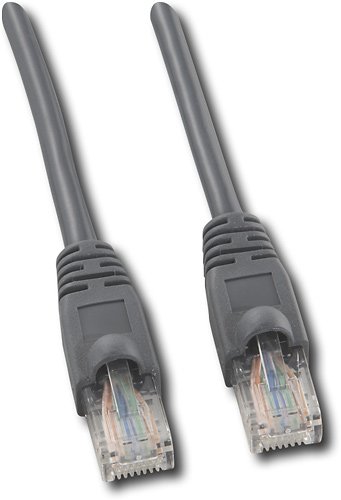
Dynex™ - 50' Cat-5e Ethernet Cable - Gray
 (123)
(123)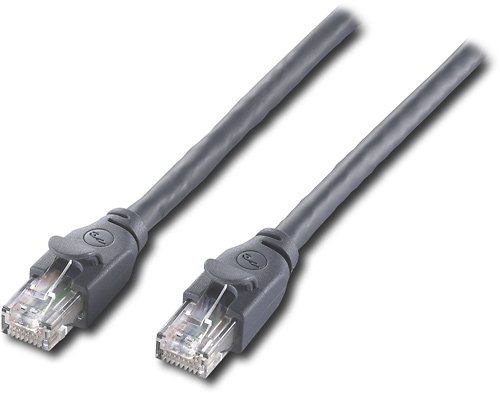
Rocketfish™ - 50' Cat-6 Network Cable - Multi
 (84)
(84)13 years, 4 months ago
by
Jaron

